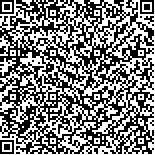| 摘要: |
| 海流信息在海上航行、海洋资源勘探等方面有着重要的应用, 传统的现场和遥感观测方式不能满足大面积、实时观测海流的要求。基于无人机平台的光学海洋遥感技术具有机动灵活、成本低、分辨率高的特点, 近年来在海洋环境监测中得到应用。然而, 由于小型无人机容易受飞行姿态、太阳耀斑等因素的影响, 目前在海流观测方面还不成熟。本文提出了利用小型无人机获取高分辨率海面流场的方法, 并分析不同因素对观测结果的影响。首先, 对无人机获取的光学海面图像做预处理, 消除几何成像和图像噪声等因素的影响, 并通过分析图像灰度值均值的变化, 减小太阳耀斑对图像的影响; 然后, 基于三维傅里叶变换和海浪的频散关系反演海流, 并将反演结果与浮标实测的海流数据进行对比, 验证了该方法的可靠性。其次, 结合实验数据详细分析了不同因素对海流反演的影响: 在本文的实验条件下(有效波高0.2~1.5 m, 波浪主波周期3.8~5.7 s), 当图像空间分辨率为0.15 m、反演子图尺寸在波浪主波波长的2~3倍时, 海流的反演误差较小; 增加图像幅数和提高时间分辨率也有利于提高海流的反演精度。现场观测实验的结果表明, 本文提出的无人机观测海流技术可以有效获取海流信息。 |
| 关键词: 光学遥感 无人机 海流 反演方法 |
| DOI:10.11759/hykx20220819001 |
| 分类号: |
| 基金项目:国家自然科学基金项目(41506199,41977302);国家自然科学基金重大仪器设备研制项目(42027805) |
|
| Method to retrieve ocean current from optical images based on UAV |
|
YANG Jing, CHEN Zhong-biao, HE Yi-jun, SUN Run-xia
|
|
School of Marine Sciences, Nanjing University of Information Science and Technology, Nanjing 210044, China
|
| Abstract: |
| Ocean current information is important for marine navigation and resource exploration, but traditional on-site and remote sensing observation methods fail to meet the requirements of large-area and real-time current observation. Optical ocean remote sensing technology based on a UAV platform demonstrates the characteristics of flexibility, low cost, and high resolution and has been applied in marine environment monitoring in recent years. However, since small UAVs are easily affected by flying attitude, solar flares, and other factors, they are not adept in ocean current observation. This study presents a method to retrieve sea surface current from optical images obtained by a small UAV, and the influences of different ingredients on the observation results are analyzed. First, the optical sea surface image acquired by the UAV is preprocessed to eliminate the influences of geometric imaging and noise, and the influence of sun glint on the image is reduced by analyzing the average gray value of the images. Then, the current is retrieved through an algorithm based on 3D fast Fourier transform and wave dispersion relationship, and the inversion results are compared with the ocean current data measured using the buoy, thus verifying the method’s reliability. Second, combined with the experimental data, the influence of different factors on ocean current inversion is analyzed in detail under the experimental conditions in this paper (effective wave height 0.2–1.5 m, main wave period 3.8–5.7 s). When the spatial resolution is 0.15 m, and the size of the study region is 2–3 times the dominant wavelength, the inversion error of the current becomes the smallest. Increasing the number of images and the temporal resolution of images are also beneficial to improving the inversion accuracy of ocean currents. The results show that the method proposed to estimate sea surface current from optical images obtained by UAV can be used to obtain the sea surface current field. |
| Key words: optical remote sensing UAV sea surface current inversion method |
